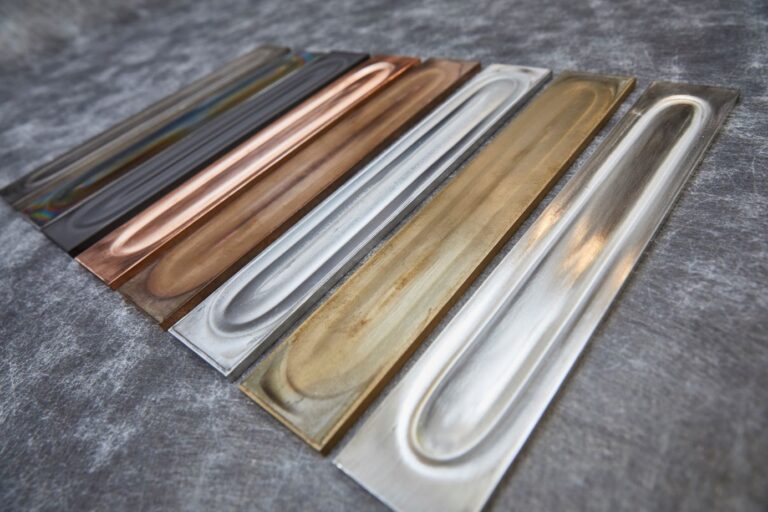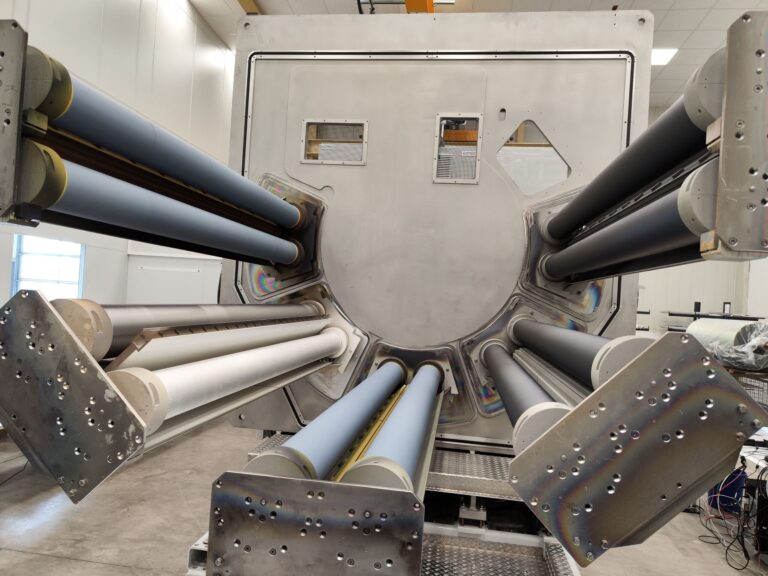For cathode sputtering we use magnetron sputtering, which has proven to be the most economical method in practice. In this process, the coating material is used in the form of plates and tubes (targets). An electric field is generated between the target and the substrate, whereby the target is set to negative potential.
Within the electric field a plasma is generated consisting of positive argon ions, electrons and neutral particles. Because of its extraordinary properties, plasma is often referred to as the fourth state of matter.
The argon ions are accelerated in the electric field by the negative target.
This leads to impact processes in which the target atoms are removed or atomized (sputtered).
The resulting metal vapor condenses as a thin layer on the passing substrate. The ionization rate and thus the deposition rate are significantly increased by magnets mounted underneath the targets.
Compared to thermal evaporation, cathode sputtering offers advantages in terms of a larger selection of coating materials, better adhesion of the coating material to the substrate and a more uniform layer thickness distribution.
The disadvantage is that due to a much lower deposition rate, slower web speeds are required to achieve the same film thicknesses as thermal evaporation.


